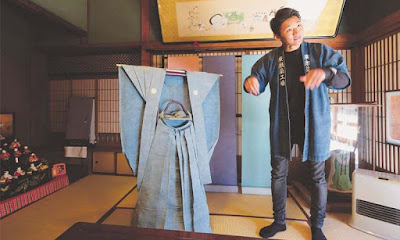TOKYO : At a century-old workshop in a quiet Tokyo neighbourhood, craftsman Yuichi Hirose brushes dye across-
Meticulously hand-cut stencils laid on fabric, using a traditional technique to produce contemporary kimono patterns.
Demands for the elaborate, elegant centrepiece of the Japanese wardrobe is in decline, but a handful of artisans and entrepreneurs like Hirose, 39, are trying to revive it.
''The kimono has become something that is very far removed from our daily lives,'' said Hirose, who joined the family business after university.
He specialises in Edo Komon - a kimono pattern hand-dyed with a Japanese paper stencil, which dates back to the Edo period between the 17th century and late 19th centuries.
It's a deeply traditional craft that requires great skill to master, he said, ''but we need to create something that is accepted in this modern time''.
Hirose's innovations, include developing new designs to adorn kimono, including tiny sharks or even skull motifs.
Once a standard of the Japanese wardrobe, the kimono is now often a garment reserved for special occasions, such as weddings and coming-of-age ceremonies, and is worn mostly by women.
This can be hugely expensive and women often hire experts to dress them because the outfit requires seemingly endless nipping, tucking and strapping.
The modern kimono industry peaked in 1975 with a market size of 1.8 trillion yen [$17 billion], according to government statistics.
But by 2008 it had shrunk to 406.5 billion yen and further to just 278.5 billion yen in 2016, according to a survey conducted by Yano Reserach Institute.
''There are many hurdles'' to buying a kimono, said Takatoshi Yajima, vice chairman of the Japan kimono promotion association, and a kimono manufacturer.
''It's expensive. It's difficult to wear. It's too delicate to wash at home,'' he said.
We need to make kimonos that are affordable and wearable. If we do that, I believe more young consumers will buy kimonos.''

.png)


0 comments:
Post a Comment
Grace A Comment!